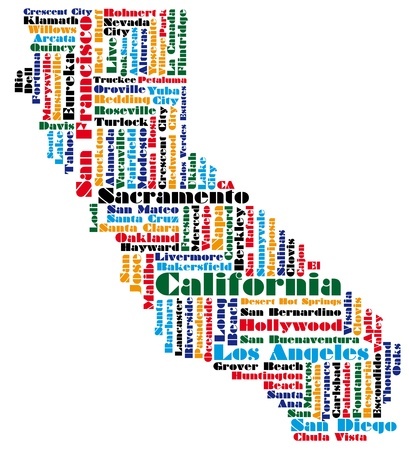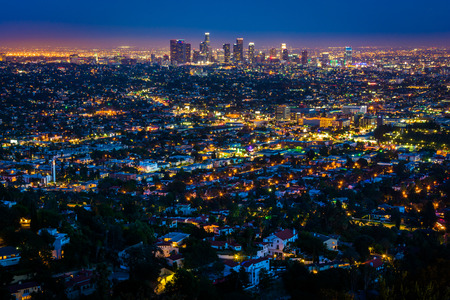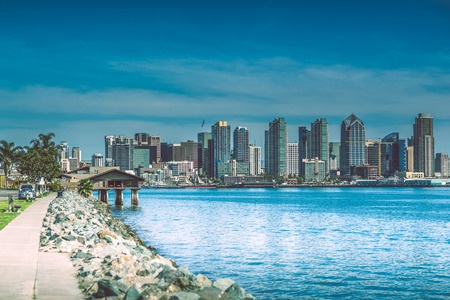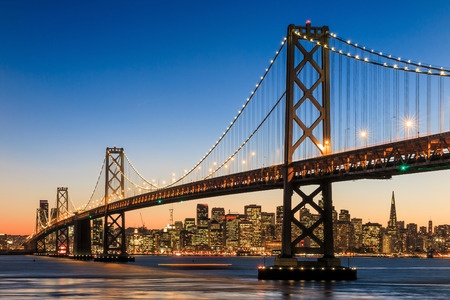California, as an international hub for a huge variety of industries, has never been more open to the innovation and economic boost brought to the state by immigrant entrepreneurs. In California, immigrant entrepreneurs create jobs, increase revenue, and contribute heavily to the state’s economy. Highly-skilled immigrants able to work in technology sectors are especially prized.
Immigration in California Economy
 California is the most heavily populated state in the United States, and the third-largest by area. The state sets the standards, both nationally and internationally, in a variety of industries including the film industry, government, real estate services, technology, scientific, technical, and professional business services. California is the birthplace of the internet, and has been the center of counterculture and social change, like the hippie movement, for decades. If California were a country, it would have the sixth-largest economy in the world, and would have the 35th-highest population.
California is the most heavily populated state in the United States, and the third-largest by area. The state sets the standards, both nationally and internationally, in a variety of industries including the film industry, government, real estate services, technology, scientific, technical, and professional business services. California is the birthplace of the internet, and has been the center of counterculture and social change, like the hippie movement, for decades. If California were a country, it would have the sixth-largest economy in the world, and would have the 35th-highest population.
As of 2015, California had 39,114,818 residents, up 5.08% from the 2010 census. In 2014, the median household income for California residents was $61,933, which is $8,276 higher than the median household income for the United States as a whole. Although the average cost of living in some areas of California is high compared to other areas of the U.S., most residents earn enough to purchase innovative products and services provided by immigrant entrepreneurs. The state is, as a whole, open-minded, and offers a wealth of opportunities for those looking for a fresh start for themselves and their businesses in the United States.
Immigrants in California
Immigration is vital to the survival of many of California’s primary industries. About 37% of California’s restaurant owners, 54% of its launderers and dry cleaners, and 49% of its grocery store owners are immigrants. Immigrant entrepreneurs are also likely to own real estate firms, truck transportation services, and doctor’s offices, according to the U.S. Census Bureau’s Survey of Business Owners and the American Community Survey. As of 2014, there were over 10,512,399 immigrants, about 27.1% of the state’s population, living and working in California. Of these, about 53% were Latin American, and 47% were Asian, with the Philippines and China as their primary countries of origin. In 2011, 36.6% of all business owners in California were immigrants, and between 2006-2010, over 676,537 new foreign-born business owners moved to the state. Immigrants are 10% more likely than non-immigrants to become small business owners in California.
Los Angeles Immigration
For immigrant entrepreneurs looking to jump start their business in a busy urban environment, Los Angeles is an excellent home base. Los Angeles is second in the nation’s metropolitan areas in terms of concentration of immigrant small business owners, at 44%. The Greater Los Angeles Area is the second-largest metropolitan area in the United States, following the New York metropolitan area, and while it has nearly half the population of New York City, it is the second-largest city in the United States. On its own, Los Angeles County is more populous than 42 entire states, with over 18.68 million residents.
Los Angeles Economy
 Los Angeles is a global city that is known as the “City of Angels”, and has a varied economy based around media, fashion, entertainment, culture, technology, sports, research, education, science, and medicine. It is a driving force within the U.S. economy, and is sixth on the Global Cities Index and ninth on the Global Power Index. As of 2010, the Los Angeles combined statistical area has the third-largest gross metropolitan product in the world, $736 billion, after the New York and Greater Tokyo metropolitan areas. The world-famous Hollywood, which is known for its contributions to television production, recorded music, motion pictures, and video games is located in Los Angeles, making the area a glamorous hotbed of creative activity.
Los Angeles is a global city that is known as the “City of Angels”, and has a varied economy based around media, fashion, entertainment, culture, technology, sports, research, education, science, and medicine. It is a driving force within the U.S. economy, and is sixth on the Global Cities Index and ninth on the Global Power Index. As of 2010, the Los Angeles combined statistical area has the third-largest gross metropolitan product in the world, $736 billion, after the New York and Greater Tokyo metropolitan areas. The world-famous Hollywood, which is known for its contributions to television production, recorded music, motion pictures, and video games is located in Los Angeles, making the area a glamorous hotbed of creative activity.
Immigrants in Los Angeles
As of May 2014, 64% of business owners in the Los Angeles area were immigrant entrepreneurs. Immigrants make up about 35% of the county’s population, and 58% of children in the area have at least one immigrant parent. Immigrants are embedded in the local economy, and in the area’s future. Immigrants in the area have a positive economic trajectory, which is improving constantly as their overall English language skills improve.
Immigrant entrepreneurs have the opportunity to receive support from the community as they establish themselves and their businesses through organizations like Step Forward LA. Step Forward LA is a prominent organization which aims to, “create programs and initiatives that support immigrant integration into the City of Los Angeles through coordination of city services, outreach, and legislative advocacy.” Although its primary focus is to help immigrants on the path towards citizenship, it also offers help for all immigrants, including entrepreneurs, put down roots in the community and thrive.
In 2015, Los Angeles was named the most diverse city in the United States by CNBC. It has the largest enclaves of Koreans, Iranians, Thai, Mexicans, and El Salvadorians anywhere in the world outside of these countries. Los Angeles welcomes immigrant entrepreneurs from every background with open arms, and offers plentiful opportunities for success.
San Diego Immigration
San Diego is the second-largest county in California and the eighth-largest in the United States. Its 2015 population was about 1,394,298, and the population of San Diego County, the fourth-largest in the United States, was about 3.3 million. San Diego is the economic center of the area, and its primary industries include tourism, international trade, manufacturing, biotechnology research, and military and defense-related activities. The area is known for its temperate climate, which was ranked second in the country by The Weather Channel, and its beautiful beaches and landscapes.
San Diego Economy
 Immigrant entrepreneurs have the opportunity to thrive in most industries in San Diego, but the area specializes in tourism, and international trade, and is home to a number of high-profile technology companies, like Qualcomm and Kyocera. San Diego welcomed over 34 million visitors in 2015, who helped contribute to the nearly $10 billion in spending over the course of the year. The tourism industry employs over 160,000 people. There is no shortage of enjoyable activities in San Diego, as it is home to world-renowned attractions like SeaWorld San Diego, San Diego Zoo, and the massive San Diego Comic-Con, all of which draw in visitors from around the globe. Perhaps one of the most appealing features of San Diego for immigrant entrepreneurs is its proximity to the Mexican border and its classification by the U.S. government as a Foreign Trade Zone. San Diego is home to the world’s busiest international border crossing, located at the San Ysidro Port of Entry. The area also hosts the largest commercial crossing on the border in the Otay Mesa area. This crossing sees the third-largest dollar value of trade and number of trucks of all U.S.-Mexico border crossings. This means that an immigrant entrepreneur who intends to trade with Mexico is uniquely positioned for commercial success.
Immigrant entrepreneurs have the opportunity to thrive in most industries in San Diego, but the area specializes in tourism, and international trade, and is home to a number of high-profile technology companies, like Qualcomm and Kyocera. San Diego welcomed over 34 million visitors in 2015, who helped contribute to the nearly $10 billion in spending over the course of the year. The tourism industry employs over 160,000 people. There is no shortage of enjoyable activities in San Diego, as it is home to world-renowned attractions like SeaWorld San Diego, San Diego Zoo, and the massive San Diego Comic-Con, all of which draw in visitors from around the globe. Perhaps one of the most appealing features of San Diego for immigrant entrepreneurs is its proximity to the Mexican border and its classification by the U.S. government as a Foreign Trade Zone. San Diego is home to the world’s busiest international border crossing, located at the San Ysidro Port of Entry. The area also hosts the largest commercial crossing on the border in the Otay Mesa area. This crossing sees the third-largest dollar value of trade and number of trucks of all U.S.-Mexico border crossings. This means that an immigrant entrepreneur who intends to trade with Mexico is uniquely positioned for commercial success.
In addition to its border trade, San Diego is a hub for overseas trade. The Port of San Diego has two cargo facilities in the Downtown area, and saw about 956,637 short tons of foreign trade and 180,417 short tons of domestic trade. For an immigrant entrepreneur seeking access to the global marketplace, San Diego is a strategic location.
Immigrants in San Diego
San Diego values its immigrants and the diversity, growth, and opportunities for international relations that they represent. As of February 2015, there were 733,577 immigrants living in the San Diego Metropolitan Area, who make up 27.4% of the labor force and are responsible for 23% of the area’s total economic output. 32% of businesses in San Diego are owned by immigrants, making them major job creators and employers for workers in the area. As immigration to San Diego increases, home ownership rises and poverty rates decrease. Latino immigrants are more likely to become entrepreneurs and create their own jobs than U.S.-born residents by a significant margin. This indicates that, for a determined immigrant entrepreneur, San Diego represents endless opportunities for international trade and growth for their companies.
San Francisco Immigration
San Francisco is the most densely-populated large city in the state of California, and the second most densely-populated city in the United States. As of 2015, the population was 864,816, with the San Francisco Bay Area and the larger San Jose-San Francisco-Oakland statistical area consisting of about 8.7 million people. San Francisco is the area’s financial, commercial, and cultural center, and has a primarily service-based economy based on tourism, financial services, high technology, professional business services, government services, education, healthcare, and financial activities. It is known primarily for its vibrant culture and famous landmarks, like the Golden Gate Bridge and Alcatraz.
San Francisco Economy
 In 2013, the San Francisco Metropolitan Area’s GDP was $388.3 billion. When the California Gold Rush ended, it heralded San Francisco’s inception as the “Wall Street of the West.” Wells Fargo is headquartered in the city, and Bank of America was founded there in the 1960s. Six Fortune 500 companies call San Francisco home, and, as the 10th place global financial center, it is designated as an Alpha World City. San Francisco has become a hub for innovation and technological advancement, specializing in biotechnology and medical research. It has since branched out to become one of America’s epicenters for start-up companies, especially since the dawn of social media, which connects people like never before and opens innovation to a wide range of creative thinkers, including immigrant entrepreneurs.
In 2013, the San Francisco Metropolitan Area’s GDP was $388.3 billion. When the California Gold Rush ended, it heralded San Francisco’s inception as the “Wall Street of the West.” Wells Fargo is headquartered in the city, and Bank of America was founded there in the 1960s. Six Fortune 500 companies call San Francisco home, and, as the 10th place global financial center, it is designated as an Alpha World City. San Francisco has become a hub for innovation and technological advancement, specializing in biotechnology and medical research. It has since branched out to become one of America’s epicenters for start-up companies, especially since the dawn of social media, which connects people like never before and opens innovation to a wide range of creative thinkers, including immigrant entrepreneurs.
1 out of every 7 jobs in San Francisco is within the tourism industry. According to Euromonitor International, it is one of the top 100 most-visited cities in the world, and attracts the fifth-most foreign tourists of any U.S. city. San Francisco’s 18 million 2014 visitors contributed over 10.67 billion into the local economy, and the area is a favorite location for conferences and conventions. 60-80 cruise ships frequent San Francisco’s Pier 35, transporting over 200,000 travelers in and out of the city. San Francisco’s varied economy presents endless opportunities for immigrant entrepreneurs seeking an exciting new environment to establish their business.
Immigrants in San Francisco
Immigrant entrepreneurs comprise 35% of business owners in San Francisco, as of 2014, and 75.5% of its H-1B visa holders are employed in high-demand STEM fields. The area is constantly in need of innovators, and much of that talent has proven to come from immigrants. The founders of billion-dollar start-ups, Eventbrite and StumbleUpon, are both foreign entrepreneurs based in San Francisco who came from overseas to achieve their dreams.
Immigrant entrepreneurs in need of support will find plenty in San Francisco. Tarmac SF is an online start-up community that, for a monthly membership fee, is geared towards helping foreign entrepreneurs build up their networks and get their business off the ground. Unshackled is a similar program that accepts applications from immigrant entrepreneurs and guides them through the start-up process, providing everything from legal advice to marketing and PR assistance. Regardless of their personal and business needs, immigrant entrepreneurs can expect to be greeted with ample support and a community open to new ideas in San Francisco.
California offers a vast array of opportunities for immigrant entrepreneurs looking to start a new business or expand their existing one. The California culture is notoriously diverse and open-minded, and the climate is ripe for new, exciting innovations and perspectives that only those from different cultures and backgrounds can bring.

